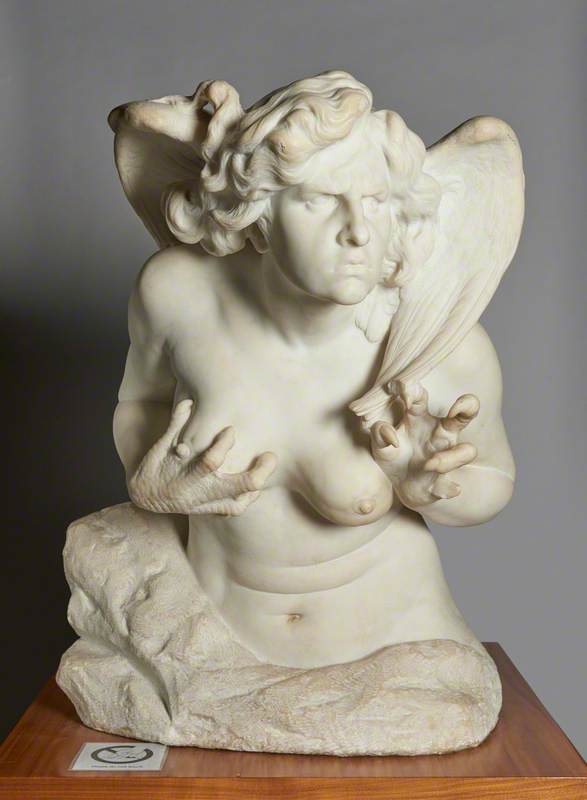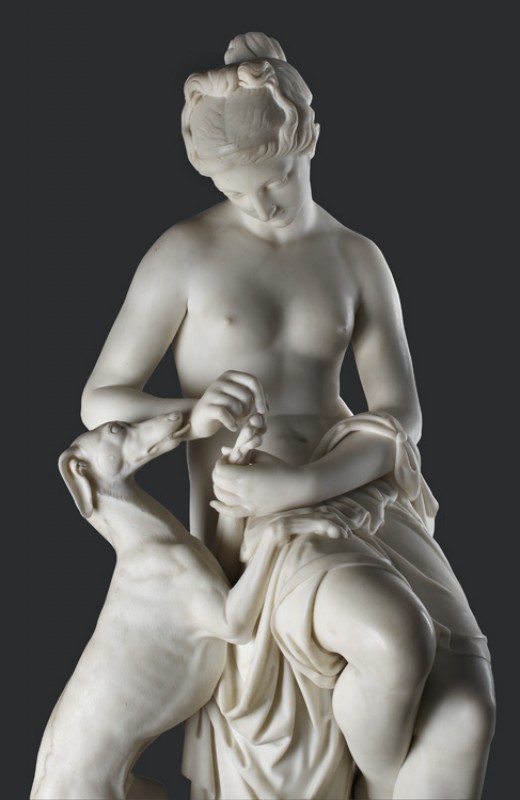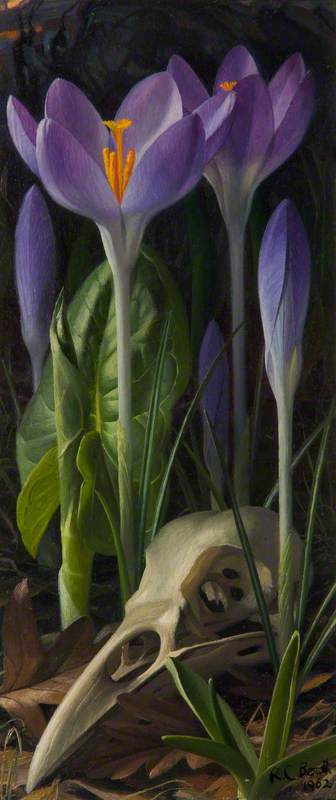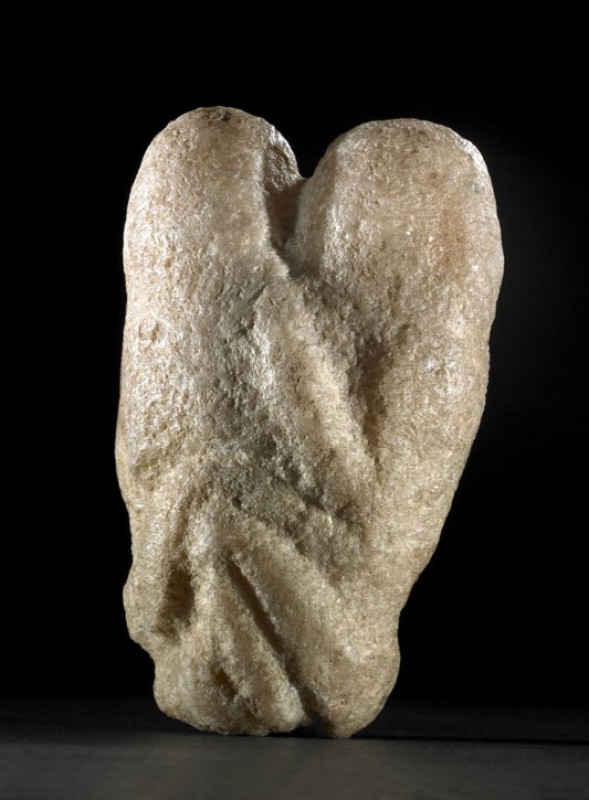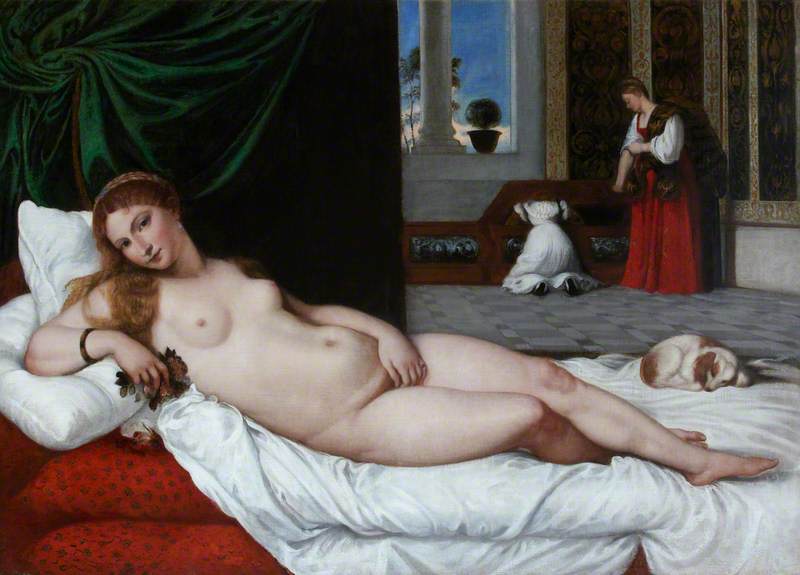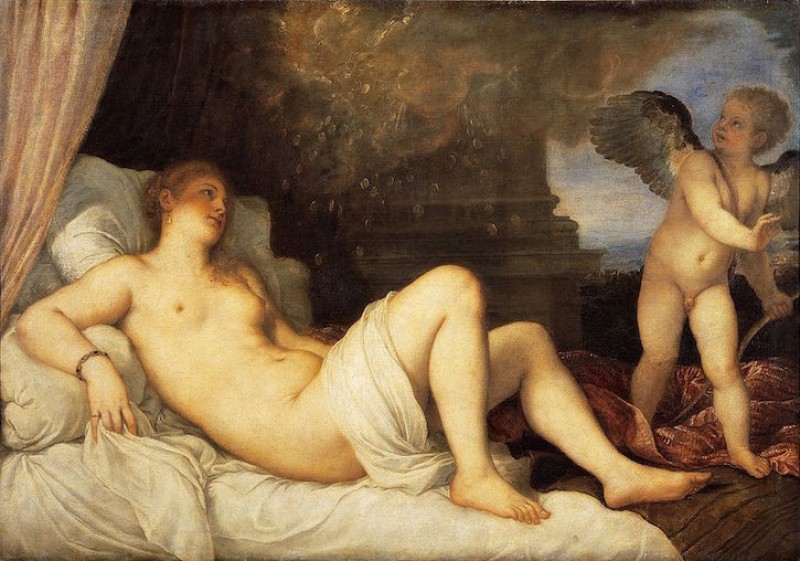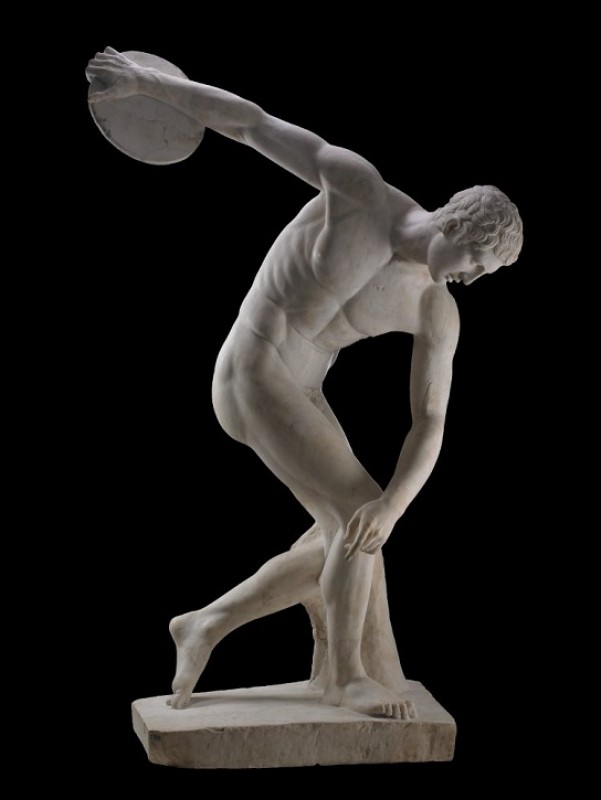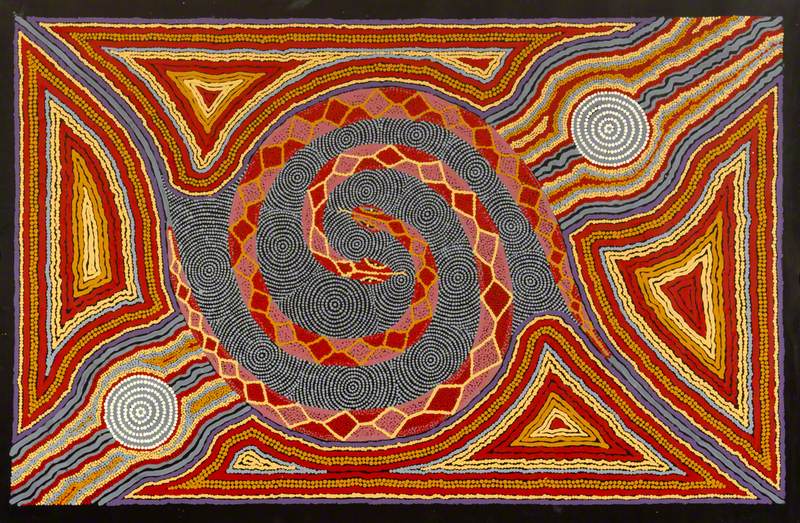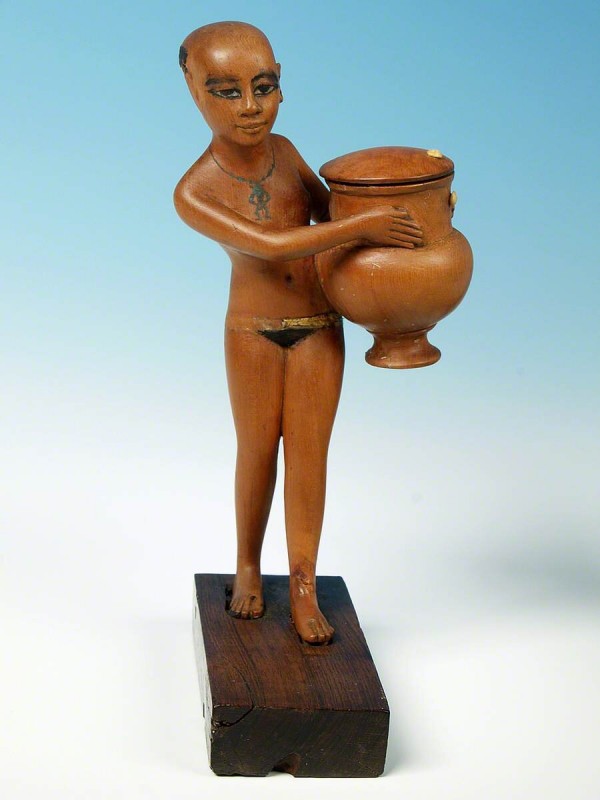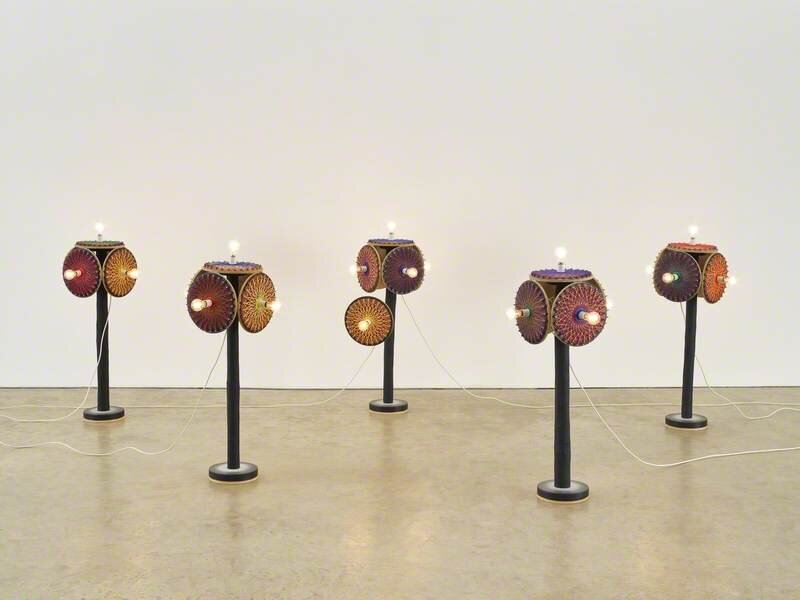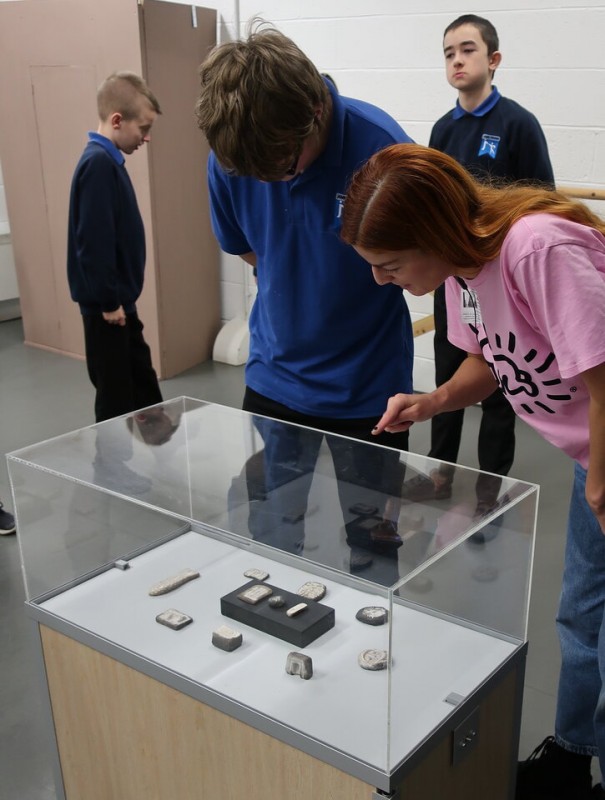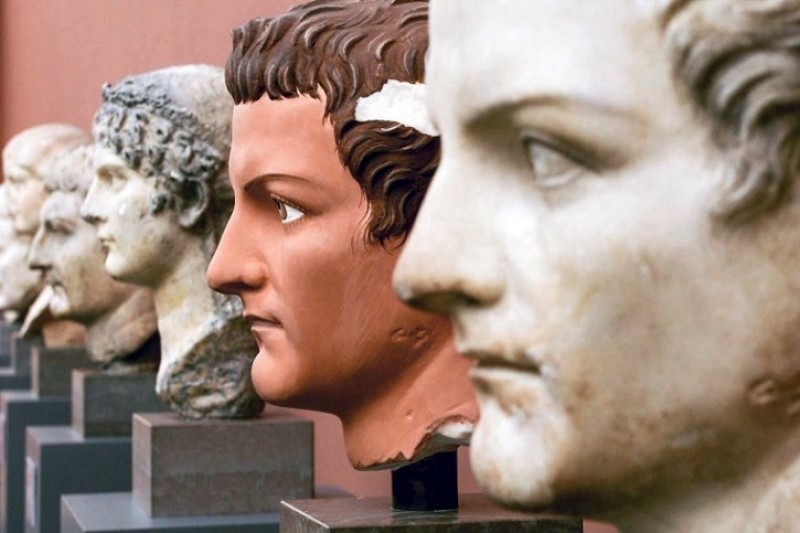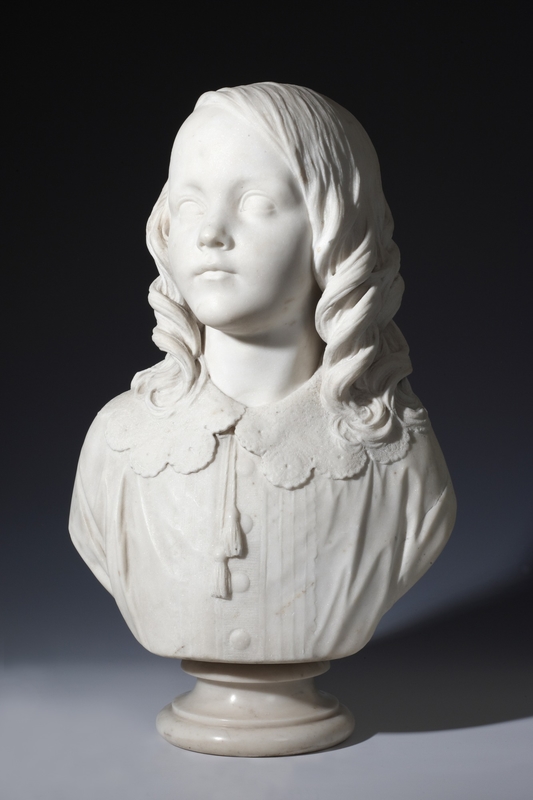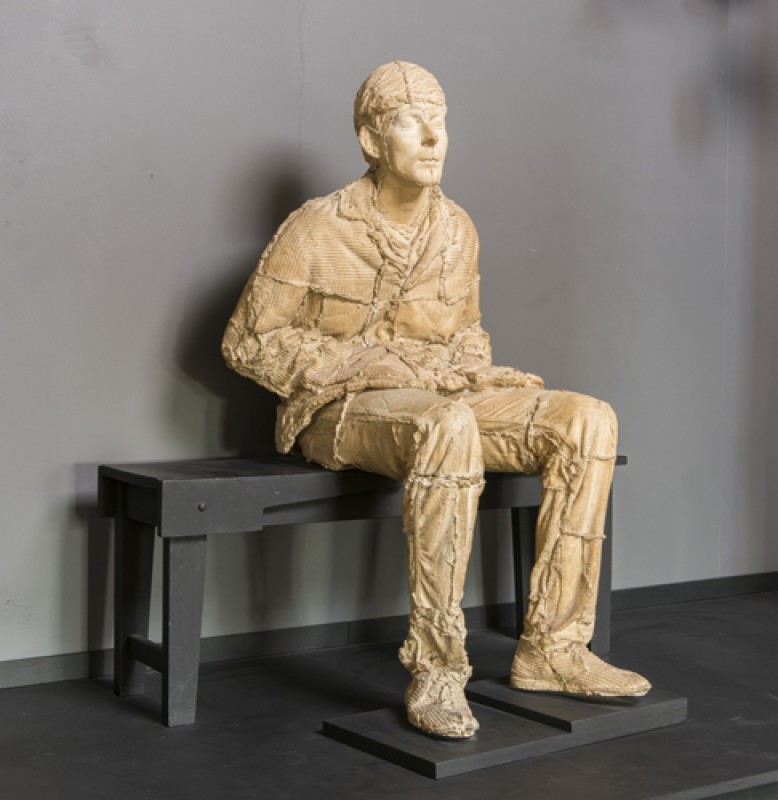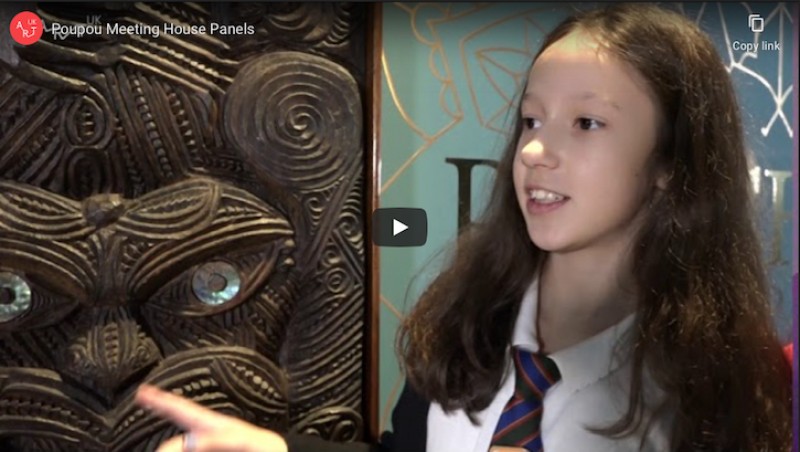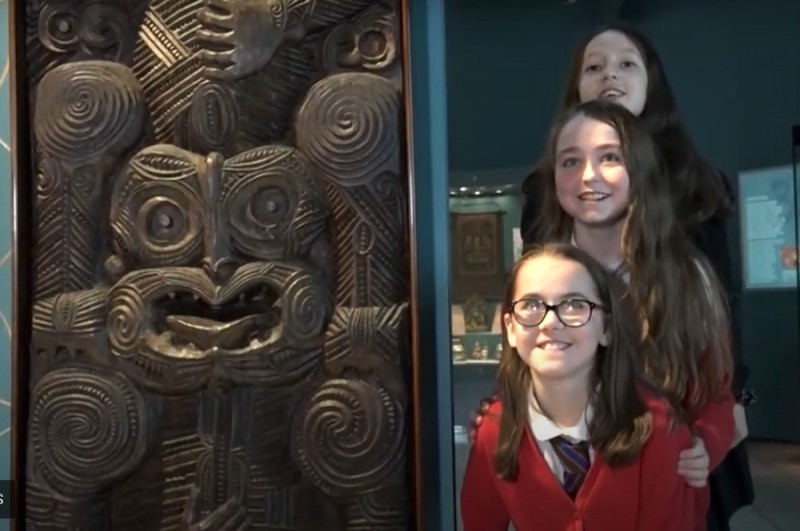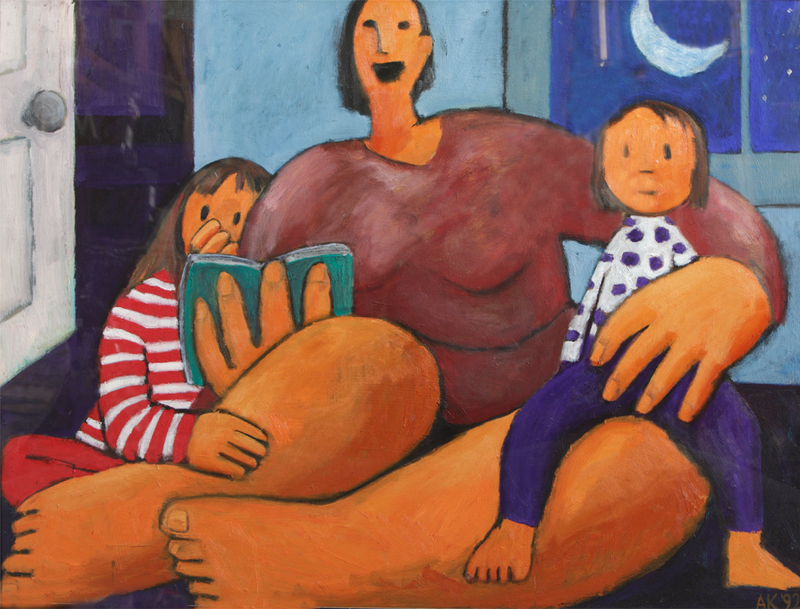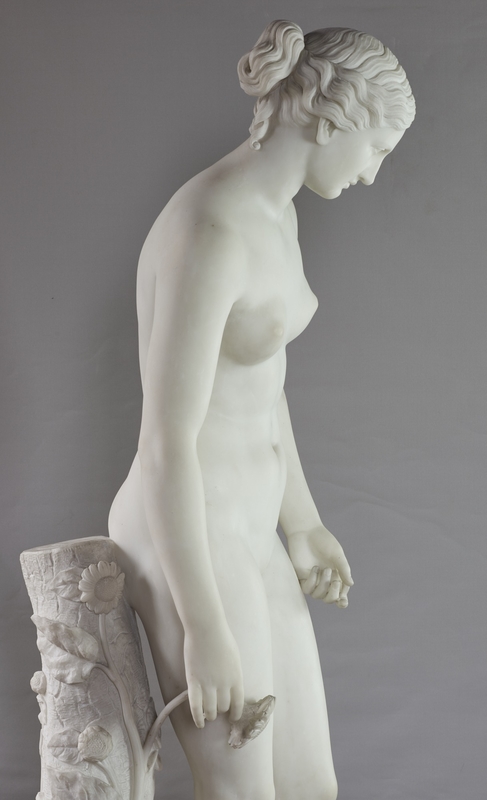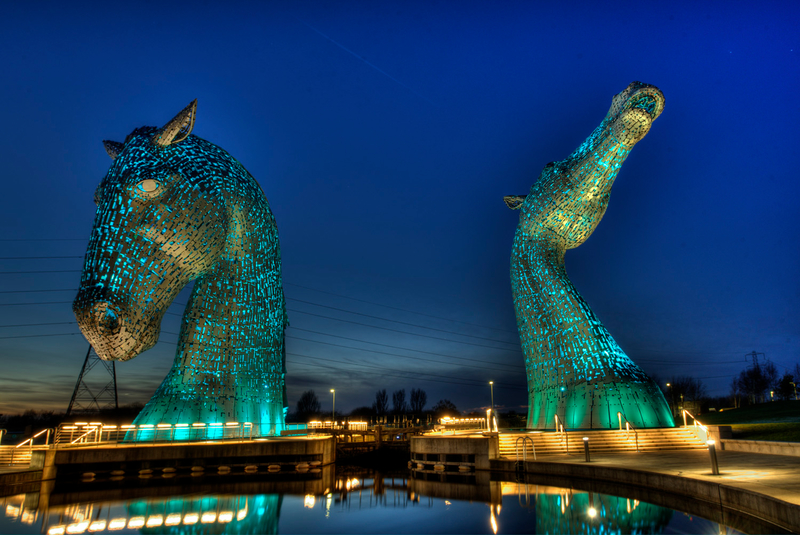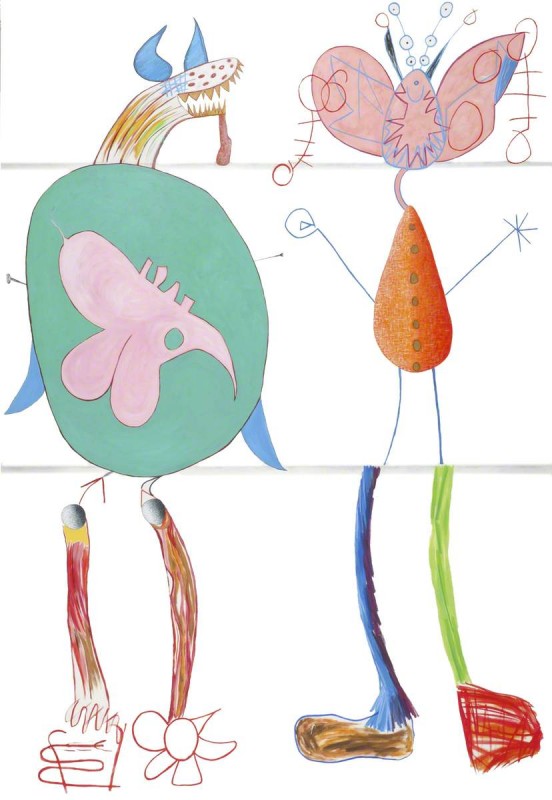'The Harpy Celaeno'
This five-minute audio clip describes the sculpture The Harpy Celaeno by Mary Pownall (1862–1937).
Full audio description text
Mary Pownall's marble sculpture The Harpy Celaeno, dating from 1902, is one of the first artworks that you will encounter when entering the Expression Gallery, off the central hall of Glasgow's Kelvingrove Art Gallery and Museum. Sculpture dominates this impressive double-height space which has a balcony running along three sides, allowing visitors to experience the artworks from multiple perspectives.
The Harpy Celaeno is a figurative sculpture of a woman's upper body, finishing at the hips. It immediately seizes your attention as you enter the gallery on ground level; larger than life-size and mounted on a plinth almost a metre high, the dynamic figure looms over you.
In Greco-Roman mythology, harpies were half-human, half-bird personifications of storm winds. In Pownall's sculpture, she appears as if emerging from the clouds, suggested by a soft billow at the base of the white, marble work. From here, her torso strains forward, head jutting with menace. She has a piercing stare and intimidating frown. Wild, curling hair snakes down the figure's back, within which two wings emerge from the neck. They flank her head, finishing at chest-height, the left one curled in front across her shoulder, the right one down her back.
Her arms remain close to her sides, but bent up at the elbows. The left, scaly hand tensed into a claw, poised. The right hand clutches her right breast, appearing to pierce the skin with her sharp talons. Her nipples are erect, implying arousal at this violence. The white marble of the sculpture creates a realistic finish, flesh and veins suggested by the natural material.
Celaeno literally means 'the dark one'. According to Virgil, the Trojan hero Aeneas angered the harpies and their leader Celaeno, when hunting animals for food on the Greek Islands of Strophades. Celaeno made a prophecy and issued a curse: the Trojans would not find their home until hunger had made them eat even their very plates. In Pownall's sculpture, are Celaeno's deep-set eyes looking into the future? Is she clutching her breast not only in anger, but to emphasise the great suffering and hunger to come?
This sculpture not only represents a powerful female figure from mythology, but also a prominent woman artist. Pownall was working in the late nineteenth and early twentieth centuries when it was hard for women to access an art education, get a studio and materials, be selected for major exhibitions or find representation from an art dealer. The daughter of a Manchester silk manufacturer, born near Leigh in Lancashire, Pownall studied in Frankfurt, Paris (where she was a pupil of the famous sculptor Rodin from 1897 to 1898) and in Rome. She married around 1902. The societal expectation would have been that she gave up her career at that time, however, she continued to work and exhibit internationally, significantly still using her maiden name. Building a considerable reputation, she became President of the Society of Women Artists.
It seems very appropriate that the model for the forceful Celaeno was the artist herself. The sculpture was made and exhibited in Rome in 1902 and was also shown at the Paris Salon in 1905. It was bequeathed to Glasgow Museums in 1944, following the artist's death, along with another of her sculptures, The Wave. Both were gifted by her husband Alfred Bromet, who wanted to continue her legacy and ensure her representation in public collections in the UK.
Art UK and VocalEyes
This audio description was created by VocalEyes for Art UK Sculpture, a national project to document and increase access to the UK's publicly owned sculpture. This description is one of 25 representing sculpture collections across the UK.
